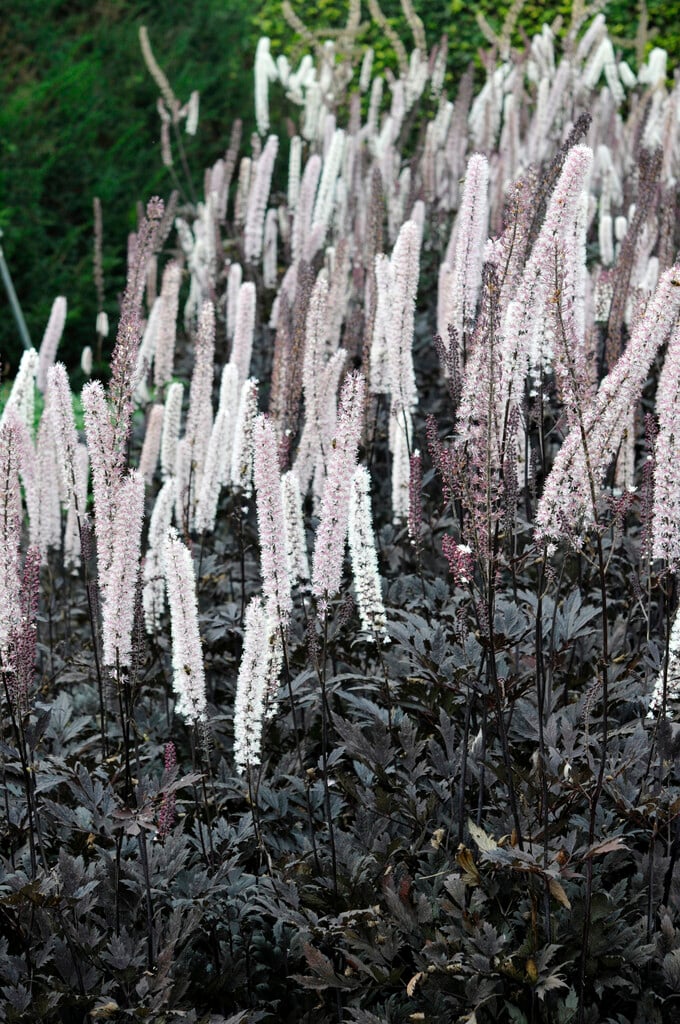Actaea simplex (Atropurpurea Group) 'Brunette'

baneberry 'Brunette'
A clump-forming perennial with purple stems and brownish-purple foliage, and dense, compact racemes to 20cm long of small, fragrant off-white flowers in early autumn, tinted purple in bud
Synonyms
Cimicifuga 'Brunette'Cimicifuga simplex var. simplex 'Brunette'
see moreCimicifuga ramosa 'Brunette'
Size
Ultimate height
1–1.5 metresTime to ultimate height
2–5 yearsUltimate spread
0.5–1 metresGrowing conditions
Moisture
Moist but well–drained, Poorly–drainedpH
Acid, Alkaline, NeutralColour & scent
| Stem | Flower | Foliage | Fruit | |
| Spring | Purple | |||
|---|---|---|---|---|
| Summer | Purple | |||
| Autumn | White | Purple | ||
| Winter |
Position
- Partial shade
Aspect
North–facing or West–facing or East–facing
Exposure
Sheltered Hardiness
H7Botanical details
- Family
- Ranunculaceae
- Native to GB / Ireland
- No
- Foliage
- Deciduous
- Habit
- Bushy
- Potentially harmful
- Harmful if eaten. Wear gloves and other protective equipment when handling
- Genus
Actaea are rhizomatous herbaceous perennials with compound leaves and small creamy-white flowers in short, erect, simple or branched terminal racemes, followed either by poisonous red, black or white berries, or by star-shaped clustered brown follicles
- Name status
Accepted
How to grow
Cultivation
Grow in cool, moist, moderately fertile soil, enriched with organic matter. Water thoroughly in dry weather.
Propagation
Propagate by seed sown in pots in a cold frame in autumn or by division in early spring
Suggested planting locations and garden types
- Cottage and informal garden
- City and courtyard gardens
- Wildlife gardens
- Flower borders and beds
Pruning
Cut back after flowering or fruiting
Pests
Generally pest-free
Diseases
Generally disease-free
Love gardening
Sign up to receive regular gardening tips, inspiration, offers and more
View our Privacy Policy
Get involved
The Royal Horticultural Society is the UK’s leading gardening charity. We aim to enrich everyone’s life through plants, and make the UK a greener and more beautiful place.

